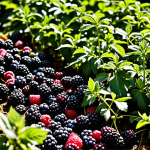Understanding Rainwater Harvesting
Rainwater harvesting is a critical component of sustainable gardening and aligns perfectly with eco-friendly practices. It involves collecting and storing rainwater for reuse, which not only helps conserve municipal water but also supports a healthier garden ecosystem. With water scarcity becoming a global concern, rainwater harvesting presents a practical solution for maintaining lush, green gardens without imposing extra stress on water resources.
Overview and Significance
The practice of rainwater harvesting involves capturing runoff from roofs and other structures, which can then be used for gardening and other non-potable purposes. This method not only reduces water bills but also provides a chlorine-free water source ideal for plant health. By adopting rainwater harvesting, gardeners contribute to a more sustainable environment, preserving natural resources and enhancing garden biodiversity.
Topic to read : Cultivating figs in the uk: proven tips for successful growth and expert pruning techniques
Benefits of Rainwater Collection
1. Water Conservation: One of the primary benefits is its ability to reduce dependency on municipal water supplies, especially during dry spells.
2. Eco-Friendly Gardening: Utilizing rainwater limits the need for chemical treatments, fostering a more organic gardening approach.
Also to discover : Unlocking the secrets of exotic berry gardening: tried-and-tested methods for thriving uk gardens in warm climates
3. Cost-Effective: Setting up collection systems may require an initial investment, but long-term savings on water bills often outweigh these costs.
Principles of Rainwater Harvesting
Understanding the basic principles behind rainwater collection is critical for effective implementation. Systems generally consist of collection surfaces like rooftops, conveyance systems such as gutters and downspouts, and storage containers including cisterns and rain barrels. Designing a system that suits your garden’s specific needs is essential for maximizing efficiency and water yield. By following these principles, gardeners can ensure their systems are both functional and sustainable, promoting a healthier outdoor environment.
Techniques for Collecting Rainwater
Incorporating efficient rainwater harvesting techniques is essential for eco-friendly gardens. Let’s explore various methods to maximize rain collection and usage for a sustainable garden environment.
Setting Up a Rain Barrel
Choosing the right location for a rain barrel is crucial for optimal efficiency. Ideally, position it beneath a downspout to capture maximum runoff. In the UK, popular choices include plastic and wooden barrels, which offer durability and resistance to local weather conditions. Regular maintenance, such as cleaning debris and checking for leaks, ensures the system functions effectively and extends the barrel’s lifespan.
Gutter and Downspout Systems
Installing effective gutter and downspout systems is key to directing rainfall into your collection system. Ensure gutters are angled correctly towards downspouts to minimize overflow and leakage. Regular cleaning prevents blockages caused by leaves and debris, a common issue that can hinder water flow. By inspecting these systems frequently, you can address any minor problems before they escalate.
Alternative Rainwater Collection Methods
For those looking to expand beyond barrels and downspouts, cisterns and underground tanks provide greater storage capacity. These systems are ideal for larger gardens requiring significant water reserves. While cisterns offer substantial volumes, they do require periodic monitoring for integrity and quality. Evaluate the pros and cons of various collection systems to find the best fit for your garden’s requirements. Integrating these methods with traditional landscaping allows for efficient rainwater use while enhancing garden aesthetics.
Soil Management for Eco-Friendly Gardens
Incorporating sustainable gardening practices revolves significantly around maintaining and enhancing soil health. Healthy soil is the foundation of a thriving garden, impacting plant growth and resilience against pests. To foster fertile ground, it’s imperative to utilise techniques that naturally boost soil quality.
Enhancing Soil Fertility
One effective approach is to integrate organic matter, such as compost, into the soil to improve its nutrient content and structure. Composting not only recycles garden waste but also enriches soil with essential nutrients, enhancing its water retention capabilities. Incorporating cover crops and rotating plant species can further ameliorate soil quality by preventing nutrient depletion and reducing erosion.
Composting for Soil Vitality
Composting plays a pivotal role in maintaining garden soil health. By decomposing organic waste like kitchen scraps and fallen leaves, compost creates a rich humus that conditions the soil. This process supports microbial activity, crucial for nutrient cycling, and contributes to a balanced soil pH. Employing methods like vermicomposting, where worms break down material, accelerates the decomposition process and maximises nutrient output.
In summary, focusing on soil management through these eco-friendly techniques ensures a robust foundation for sustainable gardening practices. Engaging with your garden’s soil in this manner not only promotes vibrant plant life but also aligns with broader eco-friendly practices.
Selecting Plants for UK Climate
Choosing the right plants is crucial for maintaining an eco-friendly garden in the UK. Opting for native plants is advantageous as they are inherently adapted to the local climate, reducing the need for excessive watering and maintenance. These species thrive best under typical British weather conditions, making them a sustainable choice for gardeners seeking to conserve resources.
Native and Drought-Resistant Plants
Drought-resistant plants are equally beneficial, especially in regions prone to dry spells. Varieties such as Lavender, Rosemary, and Sedum are not only resilient but also add aesthetic value to your garden. These plants have deep root systems that allow them to access moisture well below the soil surface, ensuring survival even in adverse conditions.
Soil and Climate Compatibility
Selecting plants that suit your garden’s soil type is imperative. Conducting soil tests can help determine whether your garden is primarily clay, sandy, loam, or chalky, guiding you in plant selection. Furthermore, understanding microclimates within your garden can help in placing plants in their optimal growing conditions, maximizing their health and productivity.
Companion Planting
Companion planting involves strategically positioning plants to benefit each other, promoting a thriving garden ecosystem. For instance, pairing drought-resistant plants with those that offer natural shade can boost moisture retention in the soil. This practice not only enhances plant growth but also supports pest management by encouraging beneficial insects. By integrating these strategies, gardeners can cultivate a vibrant, sustainable landscape that flourishes with minimal intervention.
Eco-Friendly Gardening Techniques
Exploring sustainable practices is crucial for developing a permaculture-rich environment that harmonizes with nature. By applying strategies that support biodiversity, reduce water usage, and manage pests naturally, gardeners can cultivate a thriving landscape.
Implementing Permaculture Principles
Permaculture, a holistic approach, emphasizes working with nature rather than against it. By designing a garden layout that effectively uses natural elements, resources are conserved, promoting long-term sustainability. Planting a mix of species fosters biodiversity, ensuring a robust ecosystem that supports itself with minimal human intervention.
Water Conservation Practices
Optimizing water usage is vital for an eco-friendly garden. Techniques such as mulching help retain soil moisture, reducing the need for frequent watering. Ground covers provide an additional layer of protection, preventing evaporation. Implementing drip irrigation systems can efficiently target water delivery, significantly cutting down unnecessary waste and ensuring soil remains hydrated.
Pest Management Without Chemicals
To maintain balance, it’s essential to encourage beneficial insects such as ladybirds and lacewings, which naturally manage pests. Opting for companion planting empowers certain species to deter harmful insects through natural repellents. By maintaining overall plant health, gardens become less attractive to pests, creating a resilient and thriving green space.
Common Pitfalls in Eco-Friendly Gardening
Creating an eco-friendly garden is a rewarding pursuit, but it’s essential to identify and overcome common mistakes to ensure success. By recognizing these pitfalls, gardeners can develop effective, sustainable practices that truly benefit the environment.
Mistakes to Avoid
A frequent mistake in sustainable gardening is over-watering, which can lead to wasted resources and unhealthy plant conditions. It’s crucial to understand the water needs of your garden’s specific plants and adjust watering practices accordingly.
Using non-native plants may seem harmless, yet they often require more resources and maintenance compared to native or drought-resistant varieties, which thrive in local conditions with minimal intervention.
Troubleshooting and Effective Practices
Poor soil preparation can also lead to issues. Ensuring soil health through the addition of compost and other organic matter encourages robust plant growth and resilience against pests.
To address challenges, proactive troubleshooting is vital. Regularly checking for pests and nutrient deficiencies allows for timely intervention, maintaining plant health and preventing problems from escalating.
Adapting Practices Based on Conditions
Each garden is unique, and adapting gardening practices to suit individual conditions is essential. For example, in areas with high rainfall, effective drainage is crucial, while in drier regions, maximizing water retention through mulch and ground covers can be beneficial.
By learning from these missteps and embracing adaptable strategies, gardeners can nurture vibrant, eco-conscious landscapes that align with the principles of sustainable gardening.
Additional Resources and Tools
Gardening enthusiasts keen on eco-friendly approaches often seek reliable tools and support networks to enhance their techniques. Navigating the vast options available can be a challenge, yet with the right resources, gardeners can significantly advance their sustainable practices.
Essential Tools for Eco-Gardening
When setting up efficient rainwater harvesting or maintaining garden soil health, having the right equipment is crucial. Essential tools include rain barrels, composting bins, and quality soil testers. Rain barrels range from basic to advanced models equipped with filtration systems to ensure rainwater remains free from contaminants. Composting bins facilitate the decomposition process, turning kitchen scraps into valuable soil amendments.
Community Support Networks
For gardeners in the UK, joining a local gardening club can be invaluable. These communities often hold monthly meetings and workshops to exchange knowledge, share best practices, and offer support. Participating in these groups provides access to a wealth of experience and often includes tours of successful gardens, allowing members to see eco-friendly systems in action.
Online Resources and Continuing Education
Online platforms are teeming with educational materials aimed at helping gardeners learn and grow their skills. Websites like the Royal Horticultural Society offer comprehensive guides, while forums and social media groups provide spaces for real-time advice and community discussions. Additionally, online workshops and webinars hosted by gardening experts offer opportunities for continued learning and engagement with the latest sustainable gardening trends.
By utilizing these tools and resources, gardeners can connect with a supportive community, enhance their understanding of sustainable techniques, and create thriving, eco-friendly gardens.










